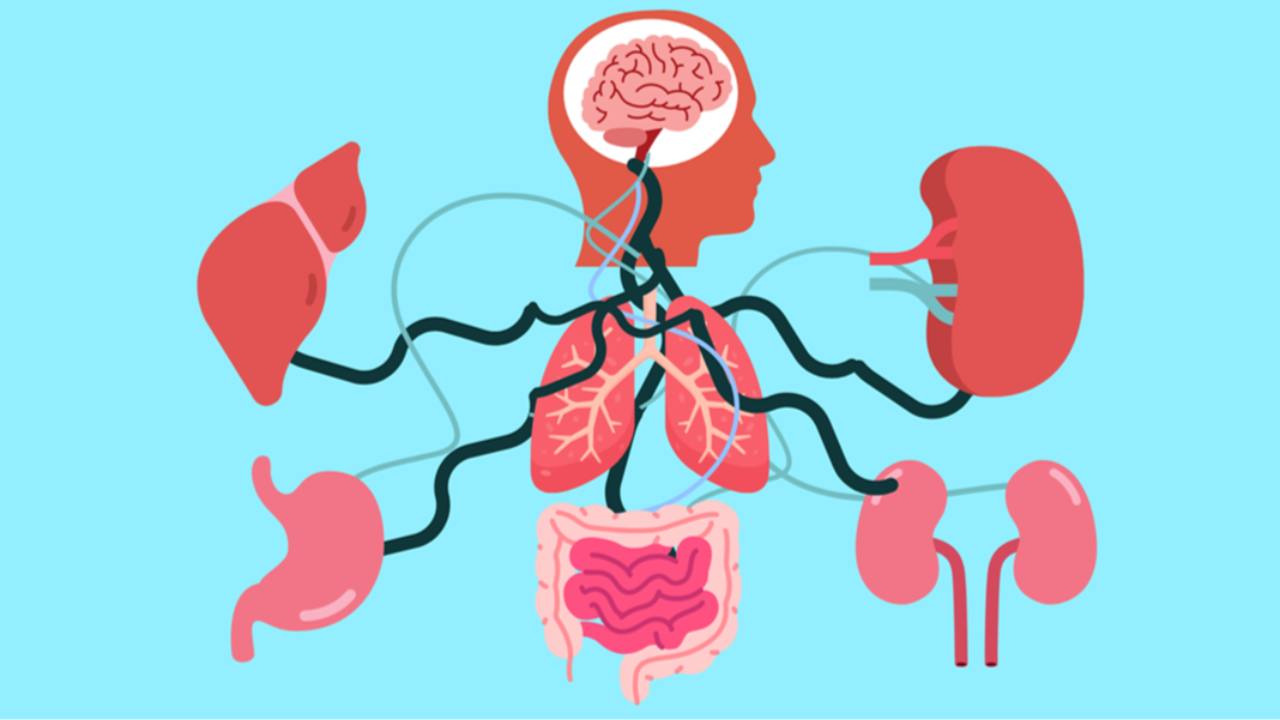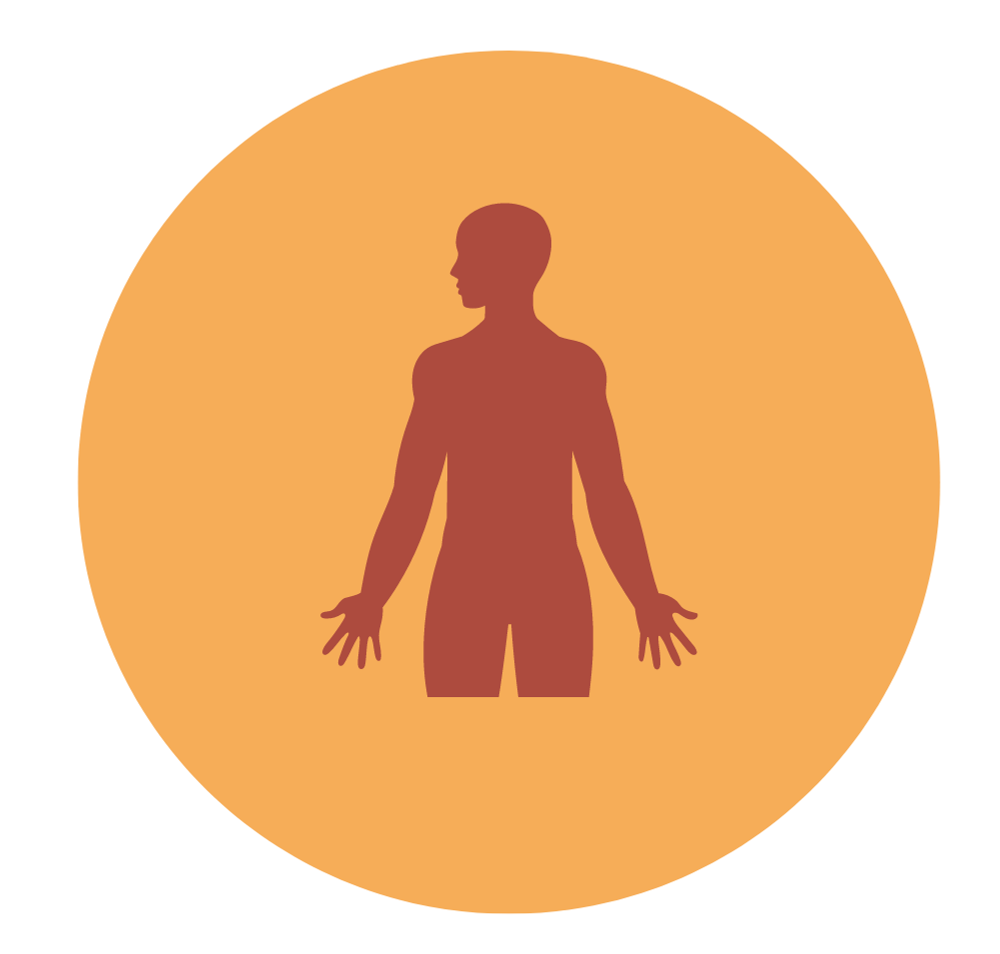Polyvagal Theory Explained: It’s Not All In Your Head

When Descartes famously declared, “I think, therefore I am,” the vagus nerve rolled its eyes. Here’s what we now know about the human experience: stress and resilience live mostly in the body, not the mind.
Polyvagal theory, developed by Stephen Porges, posits that our autonomic nervous system shifts us between three main physiological states. Let’s break it down.
Rewire Trauma Therapy’s Vagal Toning Program is an online, self-paced program that draws inspiration from Polyvagal Theory to create fourteen practical 10-minute-a-day vagal toning exercises to help calm the nervous system and release trauma from the body.
Where did Polyvagal Theory Come From?
Polyvagal theory emerged from Porges’ study of heart rate patterns in newborns and fetuses. Porges was interested in how heart rate variability, a vagal function, was being used as a measure of resilience. This became the focus of his research for several decades, leading to a reveal which turned our previous understanding of mental well-being (in Western models) on its head.
A quick aside: You can nerd out on this in full by reading The Clinical Applications of Polyvagal Theory by Stephen Porges and Deb Dana, or in part by browsing through Chapter 4, which offers a primer. Hang around here for an inspired summary! Afterward, you can take a look at Rewire Trauma Therapy’s Vagal Toning Program and have the theory translated into actionable healing.
Human existence has largely been defined by our consciousness and thinking. Mental health interventions often employ ‘front-of-the-head’ strategies, focusing on cognitions and behavior. Porges points out that this approach fails our intrinsic biological needs. As said by Porges, Polyvagal theory asserts that “physiological state is a fundamental part, and not a correlate, of emotion or mood.” In other words, our mental states are informed by the body, not just the mind.
Before getting to the nitty-gritty of the theory, we need a quick crash course in biology.
Introducing the Autonomic Nervous System, Starring the Vagus Nerve
The vagus nerve is the tenth cranial nerve, criminally underrated until its recent rise to stardom within somatic therapies. You can imagine the vagus nerve as a superhighway between the brain and the body. This body-brain communication channel regulates the autonomic nervous system, which controls involuntary functions such as heart rate and digestion.
The autonomic nervous system consists of two parts: the sympathetic and parasympathetic nervous systems. Simply put, the sympathetic nervous system is responsible for our adrenalin-fueled ‘fight or flight’ response in the face of perceived danger. The parasympathetic nervous system is involved in the complementary ‘rest and digest’ state. These systems function outside of our conscious awareness.
Porges’ work reveals that our response to stress is largely regulated by this unconscious process. He coined the term “neuroception” to describe how the nervous system detects stressors before we even have time to think about it. According to Dr. David Puder, host of the popular Psychiatry and Psychotherapy podcast, this is a strategy that humans evolved to evade danger (you can listen to his excellent episode on polyvagal theory here). The nervous system can initiate action immediately, prioritizing staying alive over thinking about staying alive.
Sarah Warren, the owner of the Somatic Movement Center, points out that 80% of vagal nerve communication is afferent, meaning that it flows body to brain. This leaves only 20% of messages flowing brain to body, and yet the brain is usually the focal point of mental health strategies. Suzanne Gundersen, esteemed teacher and educator of stress resilience, has used polyvagal theory principles to inform her practice. She inverts the conventional model and uses a ‘back-of-the-mind’ somatic approach, working through physiological response first, emotional response second, and cognitive response last.
Consider this a sneak peek, as Gundersen is involved in Rewire Trauma Therapy’s Vagal Toning Program!
Polyvagal Theory In Traffic Lights
Now that we have covered the origins, biological backdrop, and practical applications of polyvagal theory, let’s really get into it. The idea that we process stressful stimuli mostly unconsciously from within our bodies forms the groundwork of polyvagal theory, which describes three physiological states. Dr. Puder (podcaster mentioned above) eloquently categorizes them into three modes: connection, fight-or-flight, and shutdown. You can imagine that each mode corresponds to a traffic light: green, orange, and red.
Connection Mode (Green Light)
Connection mode is characterized by feeling relaxed, emotionally healthy, safe, and connected with others. This is the ventral vagal response, bringing into play the ‘rest-and-digest’ parasympathetic nervous system. This vagus nerve pathway is myelinated and evolved last of the three vagal modes. This means it connects us to our higher-order thinking and social abilities. Dr. Puder sums it up as a state of “openness, peace, and curiosity about life.”
Fight or Flight Mode (Orange Light)

Enter the sympathetic nervous system into the scene. This response developed as mammals evolved from reptiles, occurring second of the vagal modes. When we sense a possible threat, three main hormones are released: cortisol, epinephrine, and norepinephrine. These hormones are part of an adaptive response, allowing us to either flee or fight the source of danger. Our heart rate and breathing increase, blood flows into our muscles and we start to sweat. Despite feeling afraid, we still believe we can survive the threat.
Shutdown Mode (Red Light)

If we feel we cannot escape or fight, the parasympathetic nervous system causes a defensive shutdown mode. This is our dorsal vagal response, which uses the primitive, unmyelinated vagus nerve pathways which we share with reptiles. It is our body’s last resort, keeping us frozen until we are able to flee or fight. Think of how animals will sometimes feign death before scuttling away at the nearest opportunity.
Shutdown mode causes feelings of dissociation, feeling trapped, numbness, and hopelessness. Our heart rate, blood pressure, and immune response drop. Due to a decrease in brain metabolism, we can lose bodily awareness and the ability to think clearly. This intense state can also cause involuntary throwing up, urinating, or defecating. Traumatic events tip the body into a shutdown response, which can persist even when the threat is no longer present.
It is interesting to note that “vagus” is derived from the Latin term for “wandering.” This emphasizes how we can move between the states, changing our red lights into green lights. A strengthened vagal tone can work to rewire trauma responses, increase emotional stability, and foster resilience. If this sounds like something that could help you, Rewire Therapy offers a specialized Vagal Toning Program featuring over 12 techniques to increase vagal tone. You can read more about it here.
In the spirit of the vagus nerve: I feel, therefore I am. Stay tuned for part two of this series, “How Trauma Affects the Body”.
Join Rewire Trauma Therapy’s Vagal Toning Program with fourteen 10-minute-a-day, expert-guided vagal toning exercises to help:
- Reconnect with soothing sensations of calm and groundedness within the nervous system and body after surviving trauma or chronic stress.
- Strengthen the vagus nerve to reduce the intensity and frequency of triggers, flashbacks, and nightmares.
- Safely release traumatic memories and energy stored in the body through vagal toning therapeutic exercises.
- Gently reduce feelings of overwhelm with somatic movement.
- Reclaim feelings of love, kindness, and acceptance for the self and others.
- Restore sensations of power and self-agency to ease feelings of numbness and dissociation.
References
- Gundersen, S. (2022). Transformed Connections | Stress Relief & Self Management Services. Transformed Connections. https://www.transformedconnections.com/
- Porges, S. (2018). Chapter 4: Polyvagal Theory, A Primer. In Clinical Applications of the Polyvagal Theory: The Emergence of Polyvagal-Informed Therapies. WW Norton.
- Porges, S. W. (2022). Polyvagal Theory: A Science of Safety. Frontiers in Integrative Neuroscience, 16. https://doi.org/10.3389/fnint.2022.871227
- Puder, D. (2019). Episode 023: Emotional Shutdown - Understanding Polyvagal Theory. Psychiatry & Psychotherapy Podcast. https://www.psychiatrypodcast.com/psychiatry-psychotherapy-podcast/polyvagal-theory-understanding-emotional-shutdown
- Warren, S. (2022, January 13). What is the Polyvagal Theory? Somatic Movement Center. https://somaticmovementcenter.com/what-is-polyvagal-theory/?locale=en

